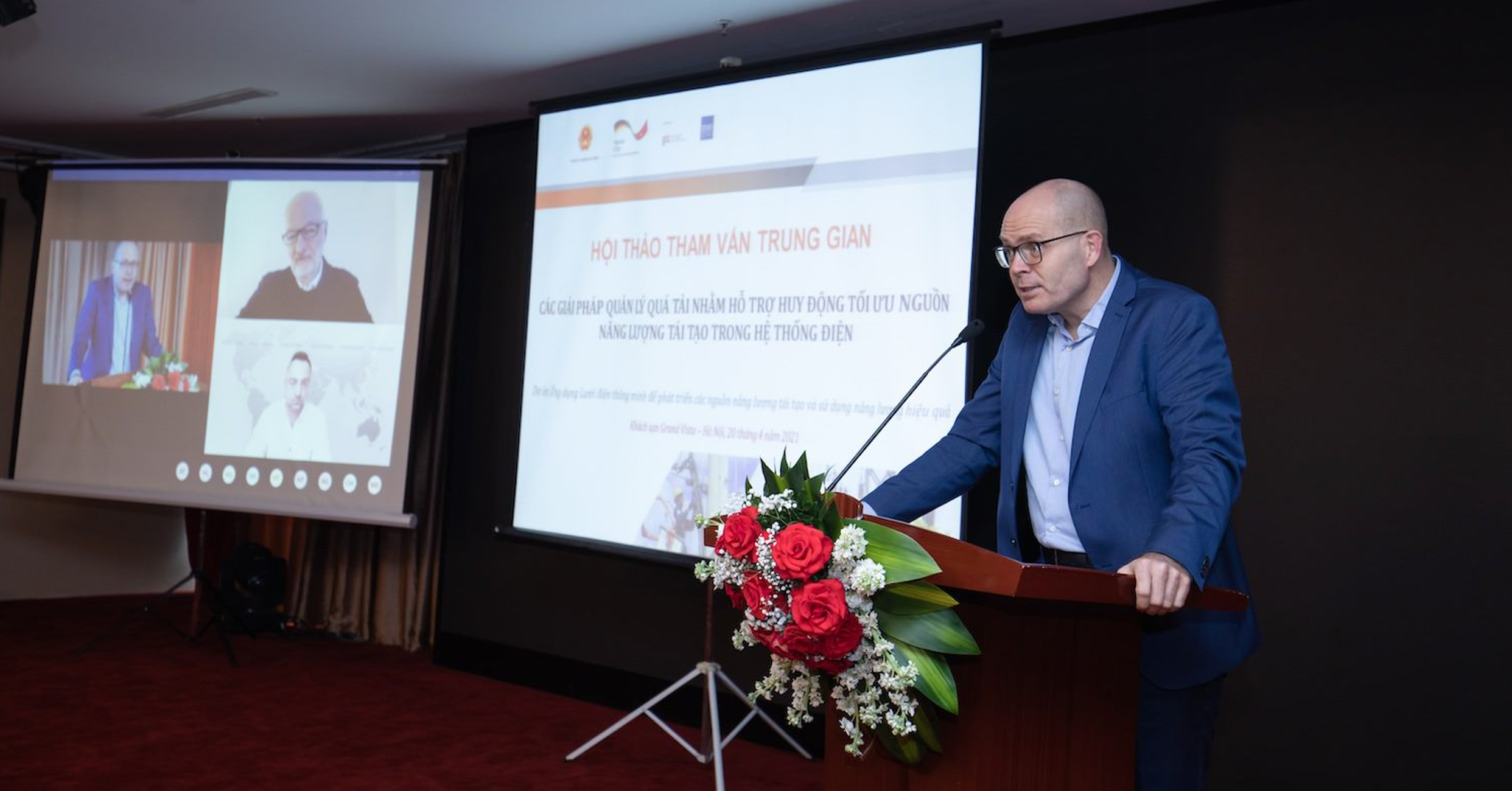
GIZ Energy Support Programme (ESP) and the Electricity Regulatory Authority of Vietnam (ERAV) co-organized an intermediate consultation workshop on ‘Congestion management solutions to support the optimal mobilization of renewable energy sources in power system’ on 20th April in Hanoi.
Participants were representatives from affiliated entities under the Ministry of Industry and Trade (MOIT), the Vietnam Electricity (EVN), experts from the Hanoi University of Science and Technology (HUST) and GIZ-assigned consultant team.
At the workshop, participants were updated with analysis of the country’s current electricity system and its current congestion management measures. Overview of international best practices were presented so local experts can learn from the lessons when dealing with relevant issues.
In recent years, Viet Nam has witnessed a blooming of renewable energy projects as a result of attractive Feed-in-Tariffs to incentivize the development of solar power (Decision 11/2017/QD-TTg) and wind power (Decision 39/2018/QD-TTg).
While most of those projects are based in the central, the grid infrastructure is not sufficient to release the capacity. Along with the problem, the instability of grid systems caused by a large gap between peak load and base load also leads to serious grid congestion. The curtailment is unavoidable as a result, affecting the projects’ revenue and investment efficiency.
In the workshop, the consultants have recommended the following measures to improve the congestion management in Vietnam:
- Regulatory framework:
- Region or time-depending feed-in-tariffs: The national feed-in tariffs created an incentive mechanism for investors, which led to a huge expansion of wind and solar PV in the south of Vietnam due to better conditions. By varying the feed-in tariffs according to the time of day or through regional differentiation, bottlenecks can be bypassed by providing incentives to investors.
- Prioritization of RE feed-in-tariffs: Beyond the feed-in tariff, there is a prioritization of Renewable Energy in Vietnam in terms of mobilization and curtailment of generation. There is a chance for improvement by using more efficient mechanism such as based on imputed cost.
- Grid-related measures:
- HVDC transmission is recommended as a long-term solution as it can relieves the North-South transmission lines, and also can further provide grid-stabilizing functionalities such as reactive power compensation.
- Phase shift transformer: The use of this technology will enable more efficient connections between two regions and help in better utilization of existing grid capacities.
- Market-related measures:
- Energy storage options: Energy storage could compensate for the fluctuations of vRE feed-in and create flexibility in operation. Moreover, energy storage systems could shift the peak supply of vRE to the time of peak demand.
- Bidding zones: Two price zones were formed when the line capacities were exceeded at a certain point in the grid, so that in each zone, the electricity can be freely traded by neglecting the limitation of line capacity. As a result, the electricity price was reduced in the surplus zone and increased in the deficit zone. In the most extreme form of market splitting, each node in the grid will represent a bidding zone (Nodal pricing). The effects of the price changes can eliminate structural congestion.
- Digitalization/Automation:
The promotion of generation plants based on solar PV and wind will lead to electricity in Vietnam being increasingly generated remote from load-centers in the coming years – which is already partly the case today. Above all, the progressive expansion of rooftop solar plants will lead to an increased feed-in of electricity at the distribution grid level, for which the transformers and lines are not fully designed. In order to avoid bottlenecks, the digitalization of distribution grid level is necessary for improving the coordination among generators, distribution and transmission grid operators.
This is the first event among the series to conduct the assignment of congestion management solutions for reducing renewable energy curtailment in Viet Nam. The task aims to develop detailed economic dispatching mechanism (both grid-related & market-related), suggest least-cost grid upgrades to avoid RE curtailment, and propose solutions and financial compensation mechanisms if the curtailment cannot be avoided.
The events were part of the bilateral technical assistance project – Smart Grids for Renewable Energy and Energy Efficiency (SGREEE), which is implemented by ERAV and ESP, on behalf of MOIT and the German Federal Ministry for Economic Cooperation and Development (BMZ) respectively.
For more information about SGREE project, please see here.
For further information, please contact Markus Bissel – SGREE’s Project Director.
